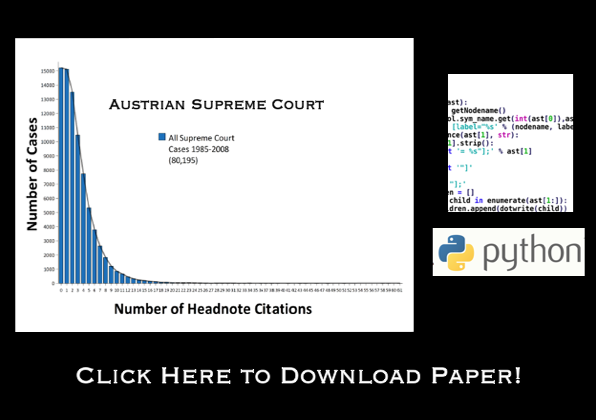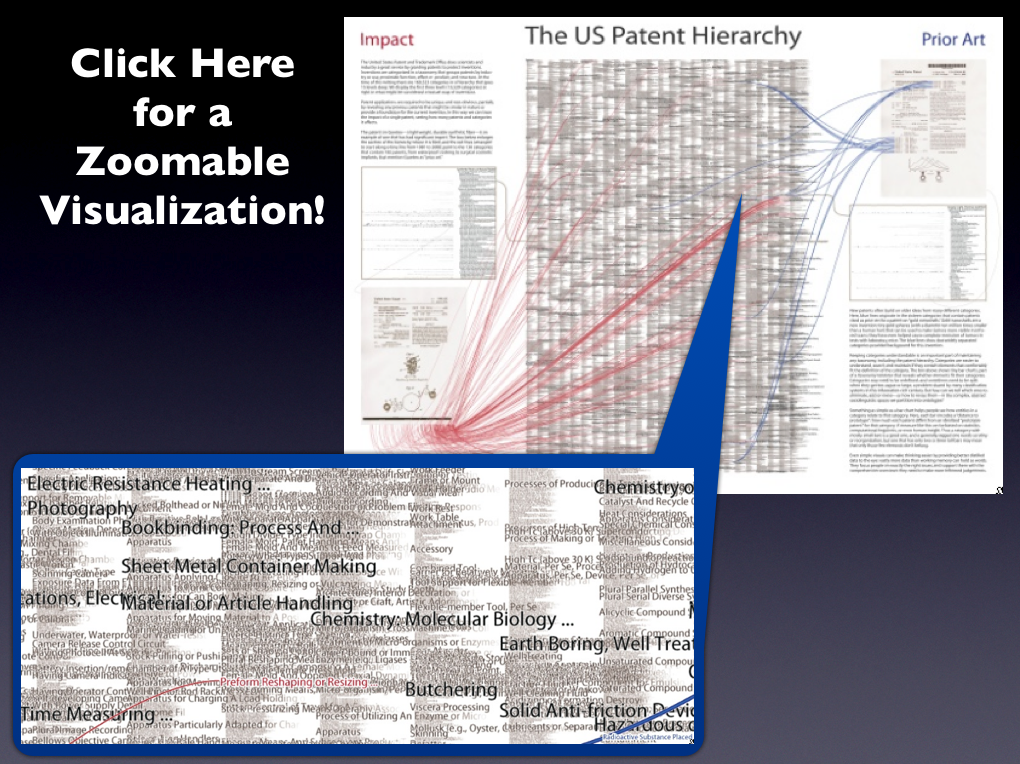Tag: algorithms
HarambeeNet @ Duke Computer Science
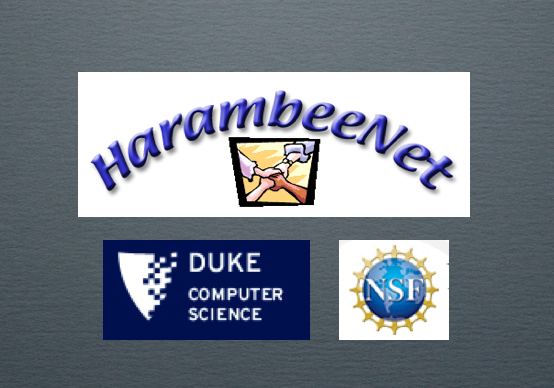
We enjoyed today’s discussion at the Harambeenet Conference here in the Duke Computer Science Department. The conference is centered upon network science and computer science education. It features lots of interdisciplinary scholarship and applications of computer science techniques in novel domains.
We are looking forward to an interesting final day of discussion and hope to participate in allied future conferences.
Citation Analysis in Continental Jurisdictions
Anton Geist has posted Using Citation Analysis Techniques for Computer-Assisted Legal Research in Continental Jurisdictions to the SSRN. While this is certainly longer than most papers, we believe it offers a good review of the broader information retrieval and law literature. In addition, it offers some empirical insight into citation patterns within continental jurisdictions. The findings in this paper are similar to those shown in important papers by Thomas Smith in The Web of the Law and by David Post & Michael Eisen in How Long is the Coastline of Law? Thoughts on the Fractal Nature of Legal Systems.
In our view, the next step for this research is to determine whether the pattern does indeed follow a power law distribution. Specifically, there exists a Maximum Likelihood based test developed in the applied physics paper Power-law Distributions in Empirical Data by Aaron Clauset, Cosma Shalizi and Mark Newman which can help adjudicate whether the detected pattern represents a highly skewed distribution or is indeed a power law.
Either way, we are excited by this paper as we believe comparative research is absolutely critical to broader theory development.
Iranian Blogosphere: Followup from Harvard NIPS 2009
We genuinely enjoyed our trip to Boston for the Networks in Political Science 2009 Conference at Harvard. There were many highlights but given the timely nature of their work we wanted to highlight the presentation by John Kelly & Bruce Etling entitled Mapping Culture, Politics, and Religion in the Arabic Blogosphere. This is a followup to last year’s presentation, Mapping Iran’s Online Public: Politics and Culture in the Persian Blogosphere. As usual, the folks at the Berkman Center are doing great work. Check out today’s New York Times featuring an article entitled Iranian Blogosphere Tests Government’s Limits.
Artificial Intelligence and Law — Barcelona 2009
Live from Barcelona, we are on the road at the International Association for Artificial Intelligence and Law. Henry Prakken has just delivered the keynote address and we will soon be giving our presentation. The conference is interesting as it embraces a wide range of topics and intellectual traditions. For example, there is a significant emphasis on ontological reasoning, computational models of argumentation and the use of XML schemas. In addition, there are a number of folks using graph theoretic techniques and applying them to the development of the law. It has been a nice few days and we have enjoyed our time here. Tomorrow, the trip continues….
Classifying the US Patent Hierarchy
The United States Patent and Trademark Office patent classification scheme organizes 3 million patents into about 160,000 distinct patent classes. This visualization by Katy Börner, Elisha Hardy, Bruce W. Herr II, Todd M. Holloway, & W. Bradford Paley considers the organizational schema used to classify patents at the US Patent Office. Their article Taxonomy Visualization in Support of the Semi-Automatic Validation and Optimization of Organizational Schemas was published in the Journal of Informetrics in 2007.
From the Abstract: “The taxonomy visualization and validation (TV) tool introduced in this paper supports the semi-automatic validation and optimization of organizational schemas such as file directories, classification hierarchies, taxonomies, or other structures imposed on a data set for organization, access, and naming. By showing the “goodness of fit” for a schema and the potentially millions of entities it organizes, the TV tool eases the identification and reclassification of misclassified information entities, the identification of classes that grow too large, the evaluation of the size and homogeneity of existing classes, the examination of the “well-formedness” of an organizational schema, and more.”
Taking Judicial Content Seriously–Lupu & Fowler’s Strategic Content Model
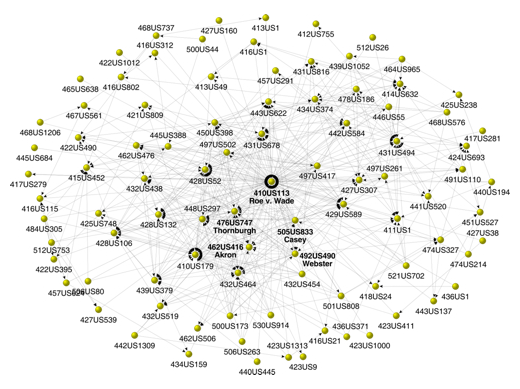
In my conversations with judicial politics scholars, many lament how many of our existing approaches tend to ignore opinion content. For those interested in embedding opinion content into existing theories of judicial decision making … consider Yonatan Lupu & James Fowler’s paper recently posted to the SSRN.
The authors present a strategic model of judicial bargaining over opinion content. They note … “we find that the Court generates opinions that are better grounded in law when more justices write concurring opinions.” To generate the specification for “grounding in law” the authors use Kleinberg’s Hubs and Authorities Algorithm calculated at the time the opinion was authored. The Strategic Content Paper is available here.
The visual above is drawn from a related Fowler project located here. Another very worthwhile paper authored by Fowler, Johnson, Spriggs, Jeon & Wahlbeck is located here.
Data Mining the News — J. Kleinberg Work Discussed in MIT Tech Review
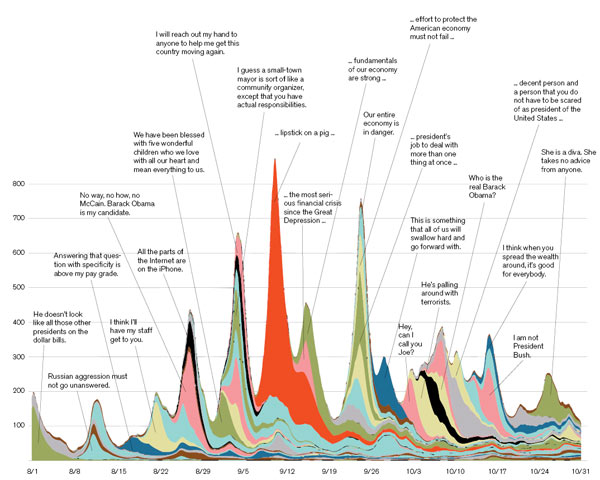
This short but cool article from MIT Technology Review discusses recent work by Computer Scientist Jon Kleinberg and his Cornell colleagues. This very nice visualization is the byproduct of their efforts at data mining more than 1 million online news items per day in the weeks leading up to the 2008 presidential election.



